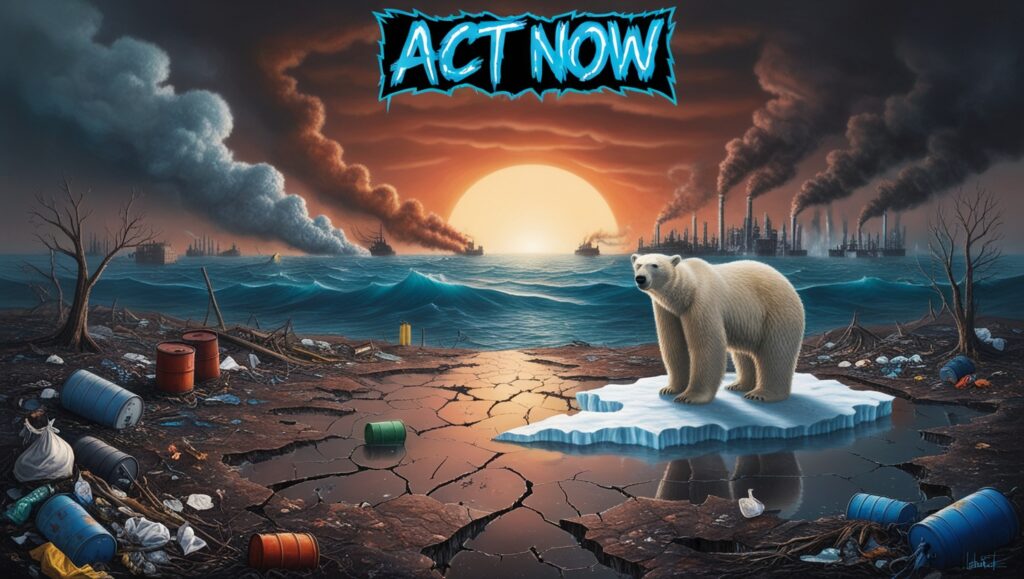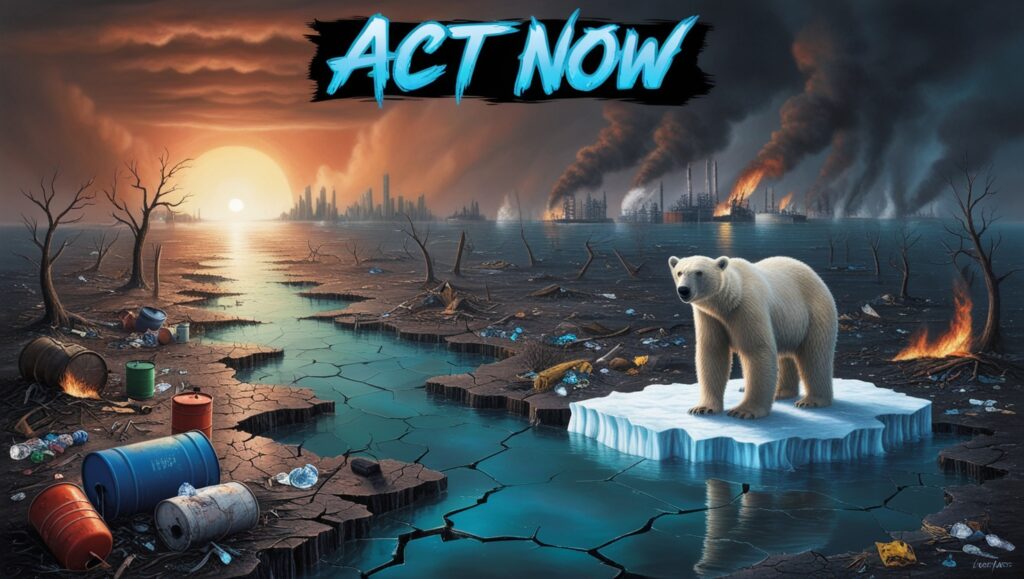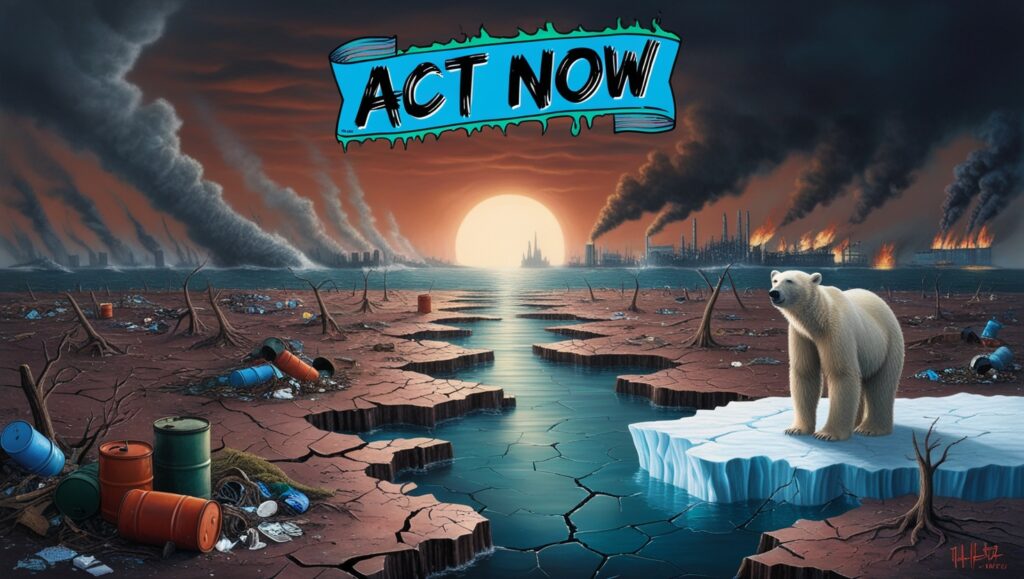The Climate Crisis: How Global Warming is Reshaping Our Planet and What We Can Do About It

The climate crisis is one of the most pressing issues facing humanity today. As global temperatures continue to rise at an unprecedented rate, the impacts of global warming are becoming more visible and more severe. From melting ice caps to devastating wildfires, the consequences of climate change are reshaping our planet in ways that affect ecosystems, economies, and human lives. However, there is still hope. With urgent action and collective responsibility, we can mitigate the worst impacts of climate change and build a sustainable future for generations to come.
1. The Science Behind Global Warming
At the heart of the climate crisis lies the greenhouse effect. The Earth’s atmosphere is composed of gases such as carbon dioxide (CO2), methane (CH4), and nitrous oxide (N2O), which trap heat from the Sun, keeping the planet warm enough to support life. However, human activities, particularly the burning of fossil fuels like coal, oil, and natural gas, have dramatically increased the concentration of these greenhouse gases, causing the Earth’s temperature to rise at an alarming rate.
According to the Intergovernmental Panel on Climate Change (IPCC), the global average temperature has already increased by approximately 1.2°C above pre-industrial levels. While this may seem like a small change, it is enough to disrupt weather patterns, melt polar ice caps, and increase the frequency and intensity of extreme weather events like heatwaves, hurricanes, droughts, and floods.

2. The Impact of Global Warming on Our Planet
The consequences of global warming are far-reaching and multifaceted, affecting everything from biodiversity to food security. Here are some of the most significant impacts:
a. Rising Sea Levels
As the polar ice caps and glaciers melt due to higher temperatures, sea levels are rising. The expansion of seawater as it warms also contributes to this rise. Coastal cities, such as Miami, New York, and Jakarta, are at risk of flooding, while small island nations in the Pacific are facing the threat of becoming uninhabitable. Rising sea levels also threaten freshwater supplies and agricultural land.
b. Extreme Weather Events
Global warming is causing more frequent and intense weather events. Heatwaves, severe storms, floods, and droughts are all becoming more common, and these extreme weather patterns pose a significant risk to human life and infrastructure. Wildfires, exacerbated by dry conditions and high temperatures, have ravaged parts of Australia, California, and the Amazon rainforest.
c. Ecosystem Disruption and Biodiversity Loss
As temperatures rise, ecosystems are being forced to adapt at a rapid pace. Many plant and animal species are unable to cope with the changing climate, leading to a loss of biodiversity. Coral reefs, which are highly sensitive to temperature changes, are experiencing widespread bleaching, threatening marine life and coastal economies. Terrestrial species are also migrating to new areas or facing extinction as their habitats become inhospitable.
d. Food and Water Security
Climate change is affecting global food production by altering rainfall patterns, increasing the frequency of droughts, and changing growing seasons. In some regions, crop yields are declining, leading to food shortages and higher prices. At the same time, the availability of freshwater is being threatened by changes in precipitation and the depletion of groundwater resources.
3. What We Can Do About It
While the climate crisis is a daunting challenge, there is still time to take meaningful action. The key to mitigating global warming lies in reducing greenhouse gas emissions and transitioning to a more sustainable and resilient world. Here are some of the most effective strategies for addressing climate change:
a. Transition to Renewable Energy
The most important step in combating climate change is transitioning away from fossil fuels and investing in renewable energy sources like solar, wind, and geothermal power. These energy sources produce little to no greenhouse gas emissions, making them essential for reducing the carbon footprint of our energy systems. Governments, businesses, and individuals must prioritize the development and adoption of clean energy technologies to meet global climate goals.
b. Energy Efficiency and Conservation
In addition to shifting to renewable energy, improving energy efficiency is a critical strategy for reducing emissions. This includes adopting energy-efficient technologies in buildings, transportation, and industrial processes. Simple steps, like using energy-efficient appliances, improving insulation in homes, and reducing car travel, can also contribute to lowering overall energy consumption.
c. Protecting and Restoring Forests
Forests act as carbon sinks, absorbing large amounts of CO2 from the atmosphere. Deforestation, however, is a significant driver of global warming, as it releases stored carbon back into the atmosphere. Protecting existing forests, halting illegal logging, and restoring damaged ecosystems through reforestation and afforestation efforts can help mitigate climate change and protect biodiversity.
d. Sustainable Agriculture
Agriculture is both a contributor to and a victim of climate change. Sustainable farming practices, such as regenerative agriculture, can help reduce emissions, improve soil health, and increase carbon sequestration. Reducing food waste, supporting plant-based diets, and promoting sustainable land use are also essential for addressing climate-related challenges in food production.
e. Climate Policy and Global Cooperation
Governments must take bold steps to implement policies that reduce emissions, promote green technologies, and hold corporations accountable for their environmental impact. International cooperation is essential, as climate change is a global problem that requires a collective response. Agreements like the Paris Agreement aim to limit global temperature rise to below 2°C, with an ambition to keep it below 1.5°C. Governments must adhere to these commitments and increase their efforts to meet climate targets.
f. Raising Awareness and Education
One of the most powerful tools in combating climate change is education. By raising awareness about the causes and consequences of global warming, we can inspire individuals and communities to take action. Education campaigns, policy advocacy, and grassroots movements all play an important role in driving public support for climate solutions.
4. The Role of Individuals in the Fight Against Climate Change
While systemic change is necessary, individuals also have a vital role to play in addressing the climate crisis. Every action counts, whether it’s reducing energy consumption, adopting a more sustainable lifestyle, or advocating for climate action in your community.
a. Reduce, Reuse, Recycle
Reducing waste by reusing and recycling products can help reduce the demand for new resources and lower emissions associated with production and transportation.
b. Sustainable Transportation
Opting for public transportation, carpooling, biking, or driving electric vehicles can significantly reduce emissions from the transportation sector. Walking or using alternative modes of transport not only helps the environment but also promotes personal health.
c. Support Green Companies and Products
Supporting businesses that prioritize sustainability and eco-friendly practices can help drive demand for green products and services. By choosing sustainably sourced goods and reducing consumption of single-use plastics, individuals can reduce their environmental footprint.
5. Conclusion: A Call to Action
The climate crisis is an urgent and global challenge that requires immediate action from all sectors of society. While the impacts of global warming are already being felt, we have the power to change course and mitigate the worst consequences of climate change. Through collective action—on the individual, community, national, and global levels—we can reduce emissions, protect our planet’s ecosystems, and ensure a sustainable future for generations to come. The time to act is now.

Cover Photo Prompt:
“An image of a striking natural landscape affected by climate change—such as a wildfire, drought-ravaged land, or a melting glacier— juxtaposed with a group of people working together, planting trees, installing solar panels, or advocating for climate action. The image should convey a sense of urgency but also hope, showing the potential for positive change and collaboration.”
Suggested Tags:
- #ClimateCrisis
- #GlobalWarming
- #SustainableFuture
- #RenewableEnergy
- #ClimateAction
- #SaveOurPlanet
- #ReduceCarbonFootprint
- #GreenFuture
- #ActOnClimate
- #ClimateChangeSolutio






